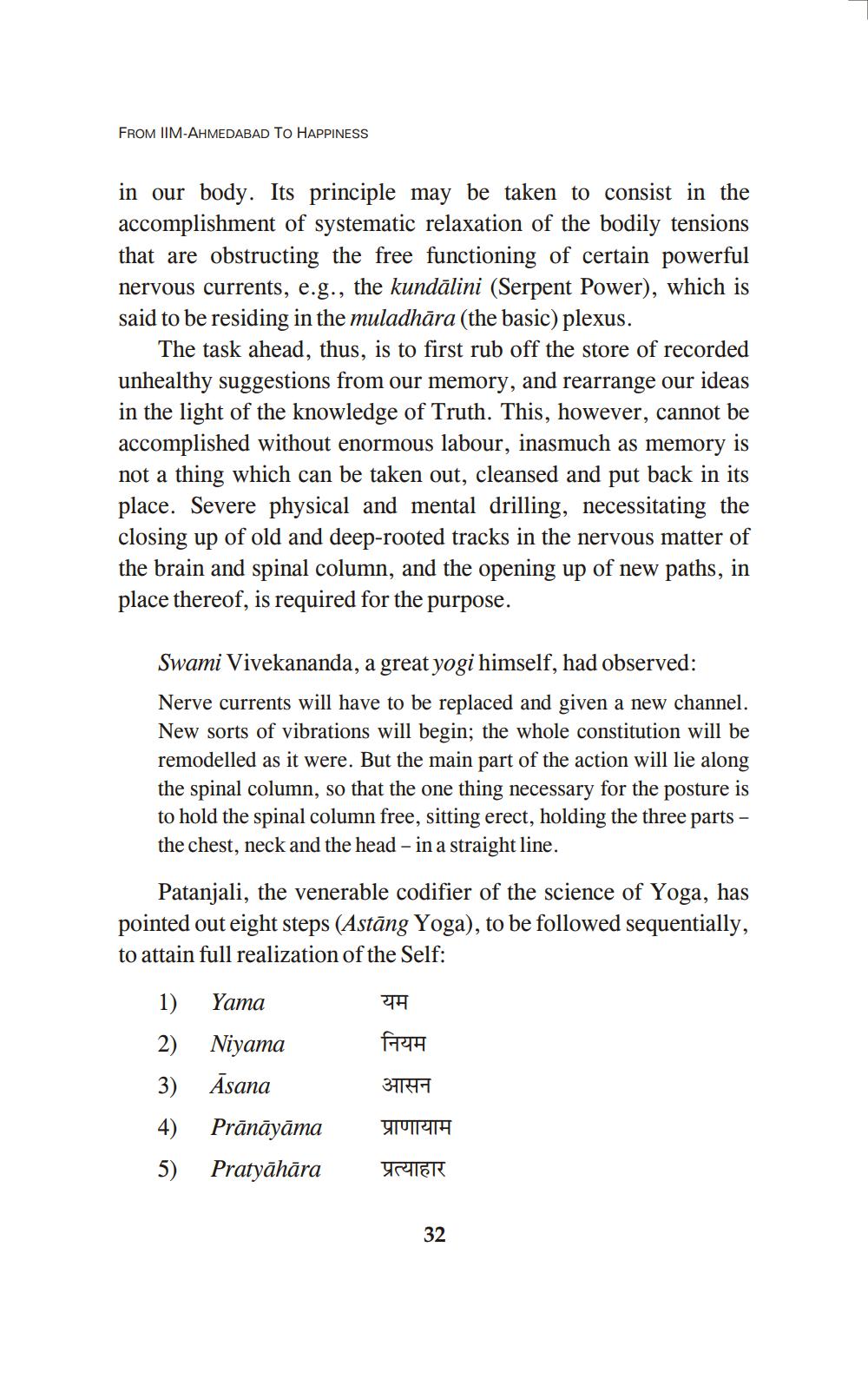________________
FROM IIM-AHMEDABAD TO HAPPINESS
in our body. Its principle may be taken to consist in the accomplishment of systematic relaxation of the bodily tensions that are obstructing the free functioning of certain powerful nervous currents, e.g., the kundalini (Serpent Power), which is said to be residing in the muladhara (the basic) plexus.
The task ahead, thus, is to first rub off the store of recorded unhealthy suggestions from our memory, and rearrange our ideas in the light of the knowledge of Truth. This, however, cannot be accomplished without enormous labour, inasmuch as memory is not a thing which can be taken out, cleansed and put back in its place. Severe physical and mental drilling, necessitating the closing up of old and deep-rooted tracks in the nervous matter of the brain and spinal column, and the opening up of new paths, in place thereof, is required for the purpose.
Swami Vivekananda, a great yogi himself, had observed:
Nerve currents will have to be replaced and given a new channel. New sorts of vibrations will begin; the whole constitution will be remodelled as it were. But the main part of the action will lie along the spinal column, so that the one thing necessary for the posture is to hold the spinal column free, sitting erect, holding the three parts - the chest, neck and the head - in a straight line.
Patanjali, the venerable codifier of the science of Yoga, has pointed out eight steps (Astang Yoga), to be followed sequentially, to attain full realization of the Self:
1) Yama
2) Niyama
3) Asana
4) Prānāyāma
5) Pratyāhāra
यम
नियम
37747
प्राणायाम
प्रत्याहार
32




